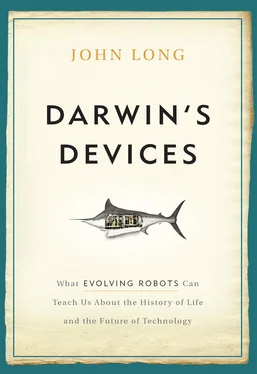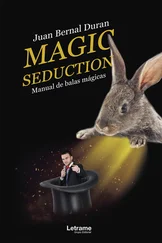You can find a great introduction to the evidence for our mental modeling in the following book: Read Montague, Your Brain Is (Almost) Perfect: How We Make Decisions (New York: Plume, 2006).
The philosopher of science, Karl Popper, has formalized the “hypothetical-deductive” methodology in order to avoid what other philosophers have called the “problem of induction,” or generalizing from a few observations to the world in general. Most of our statistical hypothesis testing in science is structured around the idea of falsification or rejection of the “null” hypothesis. The danger with this approach is that if you reject the null hypothesis, you are tempted to treat the alternative as “true,” when in fact it becomes the new null to be tested. An excellent place to start with this kind of careful inference is with Popper himself: Karl R. Popper, The Logic of Scientific Discovery (New York: Basic Books, 1959).
For that matter (ahem …), no one has seen energy. In fact, physicists don’t even know what energy is. Richard Feynman, the Nobel Laureate in Physics, and his coauthors Robert Leighton and Matthew Sands point this out eloquently in The Feynman Lectures on Physics , vol. 1 (Reading, MA: Addison-Wesley, 1964), 4-2.
I’ve given short shrift here to an interesting philosophical debate: logical positivism versus Popper’s hypothetico-deductivism. One distillation of the difference is modus ponens versus modus tollens logic, respectively.
In case you are interested in what we did to try to find our flaws, here’s an example. We were very concerned that our initial measurements of structural stiffness were somehow flawed. We had created a standard curve that gave us a value of material stiffness, E , for a given amount of gelatin and cross-linking time. We retested that formula to make sure it was accurate. Moreover, if our method for making and measuring the biomimetic notochords was highly variable, that would be an additional source of random variation and noise. To test this we split up into three different groups and completely remade all of our tails, and then we tested them for structural stiffness using a materials testing device. We compared the three groups for inter-rater reliability, the level of agreement between us. In the worst case the correlation of our stiffness measurements between groups was 0.91 out of 1.0.
In statistics-ese these least-squares linear regressions are all “highly significant,” with p < 0.01 in each case. Prior to testing, all data were transformed so that they fit a normal distribution. The 20 percent refers to the “coefficient of determination,” also called the “r-squared value,” a number from 0 to 1 that indicates how well the best-fit line represents the relationship between the dependent and independent variables.
Warning: “epistasis” has different meanings. For example, Gillespie ( Population Genetics ) defines three different kinds of genetic epistasis. Here I am taking the broader view of interactions among genes impacting fitness, similar to “functional epistasis.” I’m interested in the gene-to-fitness mapping mediated by phenotype. In Tadro3 wobble and speed interact. Because both are correlated with stiffness, and stiffness is genetically coded, selection on wobble and speed alter the genetics of the population. Simulations show that epistatic networks can adapt: Roman Yukelevich, Joseph Lachance, Fumio Aoki, and John R. True, “Long-Term Adaptation of Epistatic Genetic Networks,” Evolution 62, no. 9 (2008): 2215–2235.
In case your bad-grammar detector has signaled, I should explain that I’m trying to make a self-referential joke.
Cameron K. Ghalambor, Jeffrey A. Walker, and David N. Reznick, “Selection, Adaptation and Constraints on the Evolution of Burst Swimming Performance,” Integrative and Comparative Biology 43, no. 3 (2003): 431–438.
Rowan D. H. Barrett, Sean M. Rogers, and Dolph Schluter, “Natural Selection on a Major Armor Gene in Threespine Stickleback,” Science 322, no. 5899 (2008): 255–257.
Richard W. Blob, Sandy M. Kawino, Kristine N. Moody, William C. Bridges, Takashi Maie, Margaret B. Ptacek, Matthew L. Julius, and Heiko L. Schoenfuss, “Morphological Selection and the Evaluation of Potential Tradeoffs Between Escape from Predators and the Climbing of Waterfalls in the Hawaiian Stream Goby Sicyopterus Stimpsoni ,” Integrative and Comparative Biology 50, no. 6 (2010): 1185–1199, doi:10.1093/icb/icq070.
This ability to “know” or infer if any other agent, organic or artificial, possesses a mind is an exciting area of philosophical and scientific work that’s usually called, “The Problem of Other Minds.” I realize that I’m conflating “mind” and “intelligence” here. The two are often treated as interchangeable: a human mind is considered, by definition, intelligent; thus, so it goes for some, intelligence is found only in human minds.
Interaction of a human and a potential artificial intelligence is the basis of what Turing called the “imitation game.” We now call this the “Turing Test.” Read all about it in his wonderfully accessible paper: Alan Turing, “Computing Machinery and Intelligence,” Mind 59, no. 1 (1950): 433–460.
Here’s the official site of the Loebner Prize: www.loebner.net/Prizef/loebnerprize.html.
Stevan Harnad, “The Turing Test Is Not a Trick: Turing Indistinguishability Is a Scientific Criterion,” SIGART Bulletin 3, no. 4 (October 1992): 9–10.
Impossible as the T 3may seem to us as we contemplate human-level performance, I argue that the T 3has been passed, perhaps even at the level of the Loebner Prize gold medal, for a different species: cockroaches. Autonomous cockroach robots fooled real cockroaches so well that they could cause the real cockroaches to do things they didn’t normally do, like form groups in the light (they prefer the dark). Here’s the brilliant paper: J. Halloy et al., “Social Integration of Robots into Groups of Cockroaches to Control Self-Organized Choices,” Science 318, no. 5853 (November 2007): 1155–1158.
This paper contains an excellent description of Searle’s classic “Chinese room” thought experiment: John Searle “Is the Brain’s Mind a Computer Program?” Scientific American 202, no. 1 (1990): 26–31.
Experimental evidence for self-recognition in dolphins can be found in this paper: D. Reise and L. Marino, “Mirror Self-Recognition in the Bottle-Nose Dolphin: A Case of Cognitive Convergence,” Proceedings of the National Academy of Sciences 98, no. 10 (2001): 5937–5942.
H. M. Gray, K. Gray, and D. M. Wegner, “Dimensions of Mind Perception,” Science 315 (2007): 619.
In 1982 Vassar College became the first institution in the world to offer an undergraduate major in cognitive science. Hampshire College disputes Vassar’s claim of primacy (see the claim on the website of their School of Cognitive Science at www.hampshire.edu/cs/).
A terrific exploration of embodied intelligence is Louise Barrett’s Beyond the Brain: How Body and Environment Shape Animal and Human Minds (Princeton, NJ: Princeton University Press, 2011).
Читать дальше












